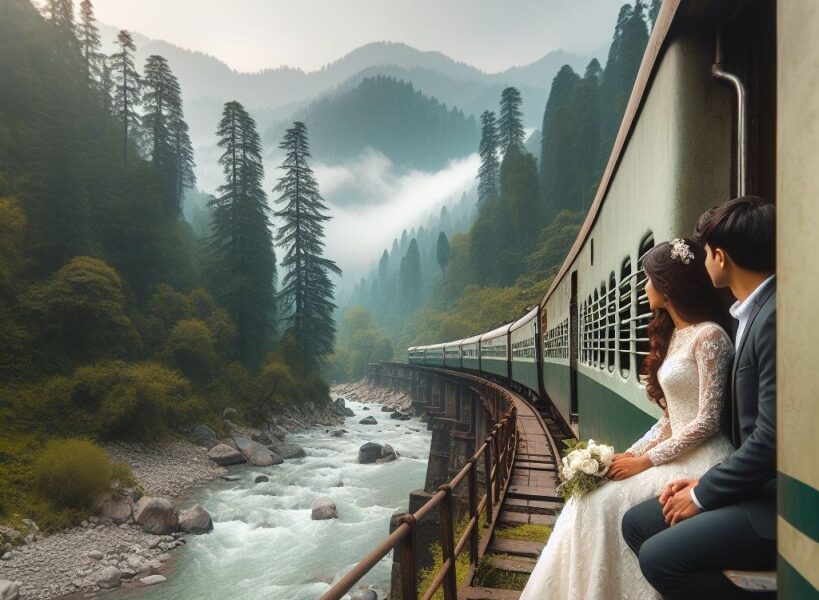In the heart of India’s northern region lies Himachal Pradesh, a land steeped in rich history and adorned with breathtaking natural beauty. From ancient temples to majestic forts, Himachal Pradesh boasts a tapestry of landmarks that not only tell tales of a bygone era but also offer a glimpse into the soul of this enchanting state. Join us as we unravel the historic treasures that make Himachal Pradesh an epitome of cultural heritage and architectural marvels.
Shimla: The Queen of Hills
Nestled amidst the snow-capped Himalayas, Shimla stands as a testament to colonial charm and architectural grandeur. The Rashtrapati Niwas, formerly the Viceregal Lodge, is a splendid example of British architecture, showcasing exquisite woodwork and sprawling gardens. The Christ Church, with its neo-Gothic style, is another gem that graces Shimla’s landscape, offering a glimpse into the region’s colonial past.
The Mystical Aura of Manali
Venture into the picturesque valley of Manali, where nature’s splendor meets ancient legends. The Hadimba Devi Temple, built in 1553, honors the goddess Hadimba and features intricate wooden carvings that narrate mythological tales. Nearby, the Rohtang Pass unfolds a panoramic vista of snow-clad peaks, enticing adventurers and nature enthusiasts alike.
Dharamshala: Abode of His Holiness the Dalai Lama
Dharamshala, nestled in the serene Kangra Valley, is a haven of peace and spirituality, making it a must-visit spot for Dharamshala Tourism. The Tsuglagkhang Complex is home to the Namgyal Monastery, where the Dalai Lama resides, and the Tibet Museum, showcasing vibrant Tibetan art and culture. Take in the tranquil surroundings at the Bhagsunath Temple and St. John in the Wilderness Church, ideal places for quiet contemplation and inner peace. Dive into the spiritual essence of Dharamshala, embracing its serene retreats and cultural richness.
Enchanting Temples of Kangra
Journey to Kangra, where ancient temples stand as guardians of faith and tradition. The Kangra Fort, dating back to the 4th century BC, exudes a regal aura with its formidable architecture and panoramic views of the Kangra Valley. Explore the Masroor Rock Cut Temples, a cluster of 15 monolithic rock-cut temples carved in the Indo-Aryan style, showcasing exquisite craftsmanship and religious significance.
Chamba: Preserving Heritage Amidst Nature’s Splendor
Amidst the verdant valleys of Chamba lies a treasure trove of historical landmarks. The Chamba Palace, with its distinctive hill architecture and ornate interiors, reflects the region’s royal legacy. The Lakshmi Narayan Temple and the Chamunda Devi Temple stand as testaments to Chamba’s religious fervor and artistic finesse, drawing pilgrims and art enthusiasts from far and wide.
Legacy of Kinnaur: The Land of Ancient Forts
Kinnaur unfolds a saga of ancient forts and cultural richness. The Kamru Fort, perched atop a hill, offers panoramic vistas of the Baspa Valley and showcases traditional Himachali architecture. Delve into the Narayan-Nagini Temple, adorned with intricate carvings and vibrant murals depicting local folklore and deities.
Majestic Ruins of Naggar
Nestled on the banks of the Beas River, Naggar exudes an aura of antiquity and artistic brilliance. The Naggar Castle, once the residence of local rulers, now stands as a museum showcasing traditional artifacts and local craftsmanship. Explore the Nicholas Roerich Art Gallery, a tribute to the renowned Russian artist who found inspiration in Himachal’s scenic landscapes.
The Timeless Charms of Spiti Valley
Embark on a journey to Spiti Valley, a land of rugged terrain and ancient monasteries. The Key Monastery, perched atop a hill, is a spiritual haven adorned with vibrant murals and ancient scriptures. Discover the Tabo Monastery, often called the “Ajanta of the Himalayas,” for its exquisite frescoes and spiritual ambiance that transcends time.
Best Time to Visit: Unveiling Himachal’s Seasonal Magic
Picking the perfect time for your Himachal adventure depends on what you’re looking for. Summer (March to June) brings pleasant weather, great for trekking, sightseeing, and exploring high-altitude spots like Spiti and Lahaul. Monsoon (July to September) paints the land green but might lead to road closures due to rains. Autumn (October to November) adds vibrant colors to the landscape, ideal for nature walks and festive vibes. Winter (December to February) transforms Himachal into a snowy paradise, perfect for winter sports and local festivities.
Frequently Asked Questions (FAQs) About Historic Himachal
Q: Do I need permits for certain places in Himachal Pradesh?
A: Yes, some areas like Spiti Valley require permits, which you can get from local authorities or tour operators.
Q: What are some must-try dishes in Himachal Pradesh?
A: Treat yourself to local delights like Siddu, Chana Madra, Dham, and Thukpa to savor the authentic tastes of Himachali cuisine.
Q: Are there beginner-friendly treks in Himachal Pradesh?
A: Absolutely! Destinations like Triund, Kheerganga, and Bijli Mahadev offer scenic treks with manageable difficulty levels.
Q: Is it safe to travel alone in Himachal Pradesh?
A: Himachal is generally safe for solo travelers, but it’s wise to be cautious, especially in remote areas, and stay updated with local guidelines.
Q: What eco-friendly efforts are in place to protect Himachal’s natural beauty?
A: Himachal Pradesh promotes eco-tourism and sustainability through waste management, tree planting initiatives, and encouraging responsible tourism practices.
Embracing Himachal’s Heritage
Himachal Pradesh’s historic landmarks are not just relics of the past; they are living testaments to a vibrant culture and a deep-rooted heritage. From the snow-kissed peaks of Shimla to the tranquil valleys of Spiti, each landmark weaves a story of resilience, faith, and artistic brilliance. Come, immerse yourself in the timeless charms of Historic Himachal, where every stone whispers tales of a glorious past.
Tags: travelTravel Dharamshala

